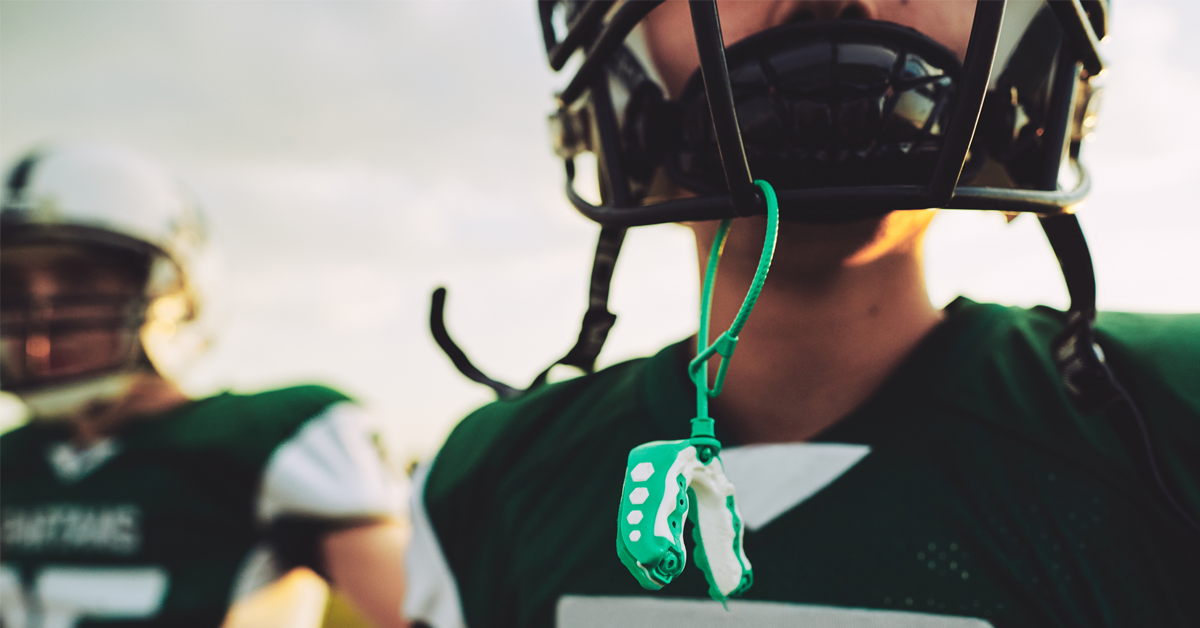Most athletes wouldn’t think twice about making sure they had the proper gear. Shoes, pads and equipment? Check! But how many also use a mouthguard?
Whether your patients play youth basketball or do weightlifting at the senior center, almost anyone involved in some sort of athletic activity can benefit from a mouthguard. Here are some talking points you can share to help start the conversation.
Who should wear a mouthguard?
The American Dental Association recommends properly fitted mouthguards for the following sports: acrobats, basketball, boxing, field hockey, football, gymnastics, handball, ice hockey, lacrosse, martial arts, racquetball, roller hockey, rugby, shot putting, skateboarding, skiing, skydiving, soccer, squash, surfing, volleyball, water polo, weightlifting and wrestling.
Other experts recommend that baseball and softball infielders wear them as well. But truly, any athlete can benefit from wearing a mouthguard.
All athletes? What if the sport has a low risk of facial injury, like weightlifting?
It might seem strange to see solitary sports like weightlifting on the list. But even if the risk of falling or being hit in the face is low, you can still damage your teeth.
For example, weightlifters often clench their teeth to tap into additional strength and power. This can cause fractures, eroded enamel and even headaches. And if you are susceptible to bruxism (tooth grinding), you are at even greater risk from clenching your teeth during exercise.
Some athletes don’t even use mouthguards for safety reasons: golfers occasionally use them as a way to improve their shot and baseball pitchers like them for calming nerves and stabilizing breathing.
How to get a mouthguard
If your patient is looking to add a mouthguard to their equipment list, there are three types you can offer based on their oral health needs:
- Custom-made: Custom mouthguards are fabricated at the dentist office or in a lab, which makes them the most expensive option. But not only are they tailored to the user’s mouth for optimal comfort, but they can also be fully customized to the athlete’s preferences.
- Mouth-formed: Also known as a “boil-and-bite,” these mouthguards are designed to soften when placed in hot water for a short amount of time. They are then placed in the mouth, where the material will soften and can be adjusted via biting or manipulation. These are found at sporting goods stores and can be a great safety tool if the manufacturer directions are followed.
- Stock: This is the type of mouthguard you’ll find at most department stores. Its wide availability makes it the most affordable option. But while any protection is better than none, stock mouthguards only come in a limited range of sizes. This leads to lackluster protection and the need for the athlete to constantly adjust the guard in their mouth.
Pro tip: If athletes wear a nightguard for bruxism, it cannot be used for athletic activity. This is because nightguards are only designed to cover up the lower part of the tooth and the softer material is not made to withstand impact.
The bottom line: If you have an athlete in your chair, a mouthguard should be in their equipment bag. Explain the benefits and share what options they have based on your assessment of their oral health needs.

